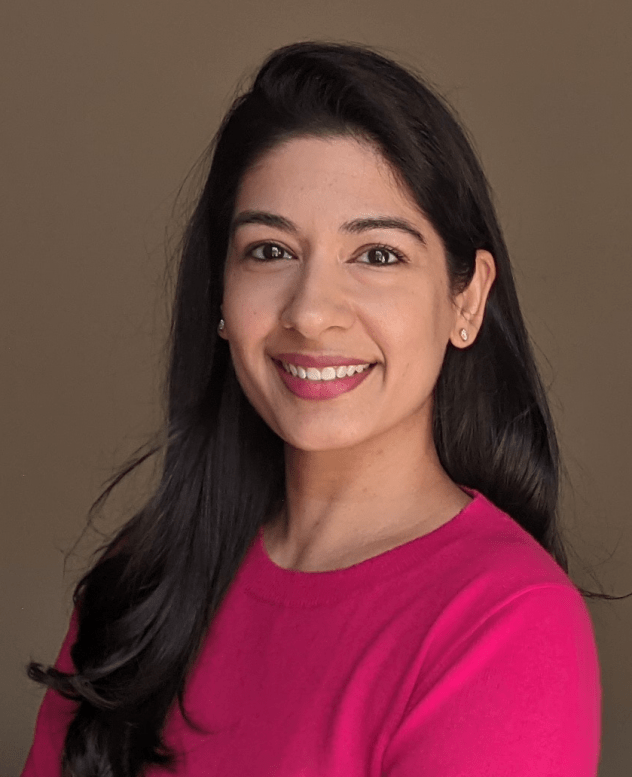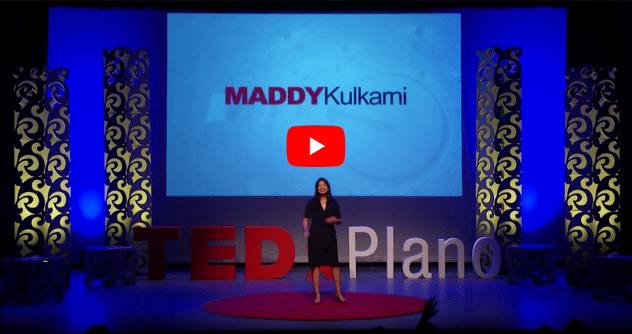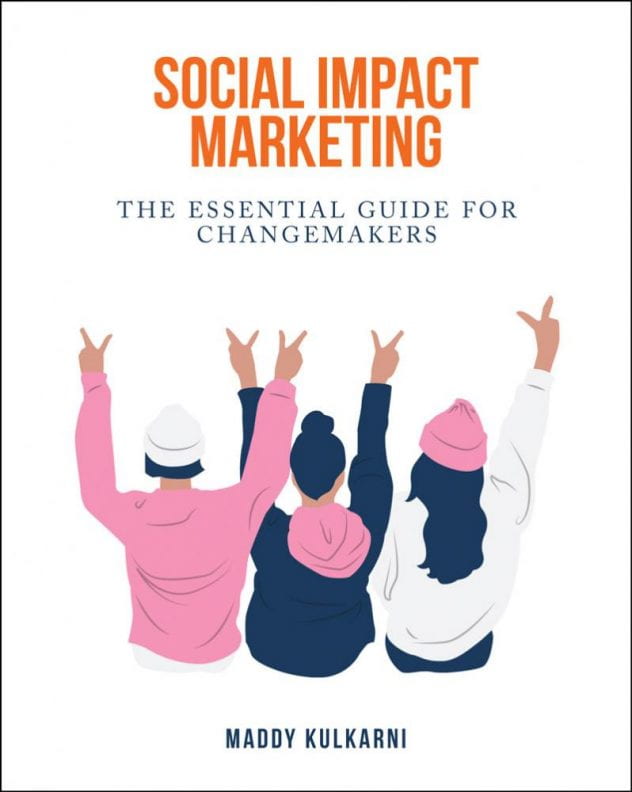
Maddy Kulkarni
Topics of Interest: Social impact marketing, sustainability, The Dallas Heroes Project, PepsiCo, corporate social responsibility, volunteering, nonprofits
Canfield BHP students grow up to become the change-makers of the world, pursuing causes bigger than themselves to make the world a better place. Whether in the office or the field, our students graduate with the knowledge and experience to make a difference no matter where they go.
Canfield BHP alum, Maddy Kulkarni, graduated with her CBHP honors degrees in finance and marketing in 2004. She later earned her MBA at the Stern School of Business at NYU. A passionate advocate, Maddy has spent her career in marketing moving the needle forward on social impact, sustainability, and corporate social responsibility initiatives. Maddy’s work as the Global Marketing Director of Sustainability and Purpose at PepsiCo is helping brands within the PepsiCo portfolio take up sustainability and many important causes to engage consumers and help make the world a better place.
“Sustainability used to be this thing off to the side that companies did for “CSR” – corporate social responsibility”, she said. “But now that consumers want to know if brands are made sustainably, with proper human rights practices, and good labor practices, it’s our job as marketers to help them understand what’s happening.”
We sat down with Maddy to talk about her work at PepsiCo and what drives her passion for volunteering, social impact, and sustainability. You’ll also read about her nonprofit, The Dallas Heroes Project, and her new textbook, Social Impact Marketing: The Essential Guide for Changemakers, a step-by-step guide on how to market any idea a student has that they believe can positively change the world. Read on for more about Maddy Kulkarni!
You’ve done a lot of work in your career working and volunteering with various nonprofits. What does social impact mean to you?
Before moving to Dallas, I was in New York for two years for grad school and one year at PepsiCo. I moved to Dallas to be closer to family and to live like a normal person. I feel like New York City is this anomaly of fun “twenty-four seven.” I thought, “ let me get back to reality, let me get back home closer to my family.” I found a place in Plano and everything was lovely, but it’s a very manicured, beautiful suburb. I thought to myself, “I need to stay grounded. I feel like I get the career thing and feel solid about it. I want to be involved in my community and do it purposely.”
Likely all of us as high school students or college students have participated in the park cleanups, beach cleanups, recycling drives, mentoring programs, or even painting a gym. Well, I thought, “I’m a professional now”, and perhaps there’s another way I could be giving. So I started asking my friends where they volunteered in the city. A friend of mine told me about Social Venture Partners, an organization of professionals who give back time, talent, and treasure. It’s a different way to approach philanthropy in that I’m not just writing a check or volunteering my time, I also have a skillset.
As a marketer, I might be able to help a nonprofit with its marketing plans so it can amplify its reach for more clients and raise more dollars. I loved this notion of skills-based volunteering. So I got super involved with the organization and volunteered with a lot of nonprofits. I started to see a theme. Many of the nonprofits (unless it’s the American Heart Association or Susan G. Komen, established nonprofits) didn’t have budgets for marketing because most of the donors wanted to see their dollars go towards programming and not necessarily marketing collateral. I thought, “perhaps I can do this in a systematic way where I’m helping nonprofits in this city with their marketing.”
Click or tap to learn more about The Dallas Heroes Project
That’s when I thought of the idea to start a nonprofit that would take a different one and do a marketing campaign for them, all the social media, print, and community newsletters every month. We’d then analyze what happened, share it with the nonprofit, and give them benchmarks and tools enabling them to do it themselves. That nonprofit’s name is called the Dallas Heroes Project and through that work, I met incredible people in this city who were trying their best to make a difference and help their neighbors. Whatever little I could do I felt was meaningful work. I took the knowledge I was picking up in my professional life and applied it to the nonprofit world and my community.
What drives you to do volunteer work? Did you have any role models growing up that influenced you?
Yeah, I think [the influence] was set by my mother when we were growing up. She always encouraged us to participate in community service activities at school. I remember getting my first paycheck and my mom saying, “Okay, most of it’s going in the bank but think about what charity you want to donate a portion to as well.” Ever since I started working, there’s always been this notion of giving back, but how I give back has evolved. So yes, the drive comes from my mom but now it’s also the community that I’ve built, friends that I know now who are giving back and learning from them, how they do philanthropy. I’m taking inspiration from all of them. You get to a certain phase of your career or your life where it’s important to develop solid skills. Then, you become that much more valuable to your community when you know how to do something well. Be it finance, marketing, or whatever you’re great at, those are skills you can offer the nonprofits.

Click or tap to see Maddy Kulkarni’s TEDxTalk called “Do Good, Better”
Referring to your TEDxTalk: How does one “do good, better”?
They find a cause that they care passionately about and see what they have to offer to that cause then, you marry the two. That’s how you can do good, better. Essentially, if you have a skill set, see if there’s a cause with a gap that you can fill. That’s how it’s done. It’s as easy as that. It involves having some empathy, getting close to the problem to understand it, and then figuring out how you can get involved to help in a meaningful and authentic way.
In the talk, I mentioned riding the city bus to understand how human trafficking happens in Dallas. The first nonprofit I was consulting with did children’s advocacy work. At that time, I didn’t know what advocacy was so at first I had to educate myself. I thought, “Okay, advocacy is when a nonprofit champions (in this case) children’s rights or lobbies legislators to create laws that are beneficial to kids.” This nonprofit works on children’s nutrition, health, education, and human trafficking laws. Fortunately, I haven’t seen human trafficking happen in my life, so to develop empathy for that cause, they created a tour where you ride a DART bus around the city and you see where the human trafficking stops are along the I-35 corridor. As you ride the bus, you’re under fluorescent lights, the sun is setting, and you start developing the feelings that a kid would have when they’re running away from home. After we’re set up for success and progress in our lives, we lead these very cushy, beautiful lives. We sometimes forget the struggles that people might be going through in neighborhoods that might be a little removed from us. So figuring out ways to develop empathy is important.
Looking back at your time in Canfield BHP, were there any specific influences like professors or classes that you took that had an impact on you? If so, tell us about them.
Shelley and Shilpa were both my advisors while I was at UT. I’ve kept in touch with them over the years. They’ve always been champions and cheerleaders for me. I’ve enjoyed that advisor-mentee relationship that later turned into a friendship. Through my BHP classes, I got the opportunity to learn in a case study environment where we thought through cases from different points of view and had a dialogue about them. I also believe in lifelong learning. An online course in public leadership I’ve been taking uses the same case study method we did in school, so I think BHP set me up for learning in that type of environment quite well.
There are many students at Canfield BHP who want to pursue a career in social impact. How can they follow the path you have blazed and what advice do you have for them to be successful in that endeavor?
The jobs are going to continue to grow in this space. There weren’t so many when I graduated from BHP. Now, global companies are creating these roles. As a student, the more you can demonstrate your passion for this area by leading sustainability initiatives at your school or through your club activities, the better off you’ll be. Show your passion for this space, demonstrate some experience in sustainability, or do whatever you can to gain experience in leading initiatives that champion sustainability. Start developing your knowledge base around these topics. It’s a growing space that’s learning and every company is on that journey. No one’s figured out how to do it one hundred percent perfectly. Take classes on sustainability and marketing to learn more about it. Then, when you do join a company, join their Employee Resource Group (ERG) focused on sustainability. We have green teams at PepsiCo that focus on sustainability so people in that ERG can become that much better positioned for those jobs. Develop competence, compassion, and interest in this space, and that would make you a prime candidate for those roles.
 Check out Social Impact Marketing: The Essential Guide for Changemakers by Maddy Kulkarni, available for purchase now.
Check out Social Impact Marketing: The Essential Guide for Changemakers by Maddy Kulkarni, available for purchase now.
You recently published a new textbook for a class you launched at The University of Texas at Dallas on Social Impact Marketing. Please tell us more about it.
I started teaching at UT Dallas a few semesters ago and launched a course called Social Impact Marketing. When you launch a course, no textbook exists for it so, during quarantine, I thought I would make myself useful and write one. The book just came out a few weeks ago. It’s a step-by-step guide on how to market ideas that can positively impact the world. It’s marketing, but with a social impact twist that’ll teach you how to start marketing your ideas.
If you’ve taken marketing 101, you’ve learned about the four Ps. Well, I say let’s add in a fifth ‘P’ on Partnerships because those are important to this kind of work. No company can take on big causes by themselves.
The second chapter is about the three C’s. Again from marketing 101, but the third C is on Competition. It asks the question: how do you turn your competitors into collaborators? For example, Pepsi and Coke will work on recycling initiatives together. In that way, we talk about marketing frameworks in the first few chapters then, we talk about what you should think about when you’re creating a website, a campaign, or a PR kit. Then, the last chapter is about measurement.
The book has only ten chapters but hopefully, it serves as a guide students can return to anytime they have an idea to change the world. If you’re an entrepreneur or a marketer, I’m hoping this can be a resource for you whenever you have a good idea.

